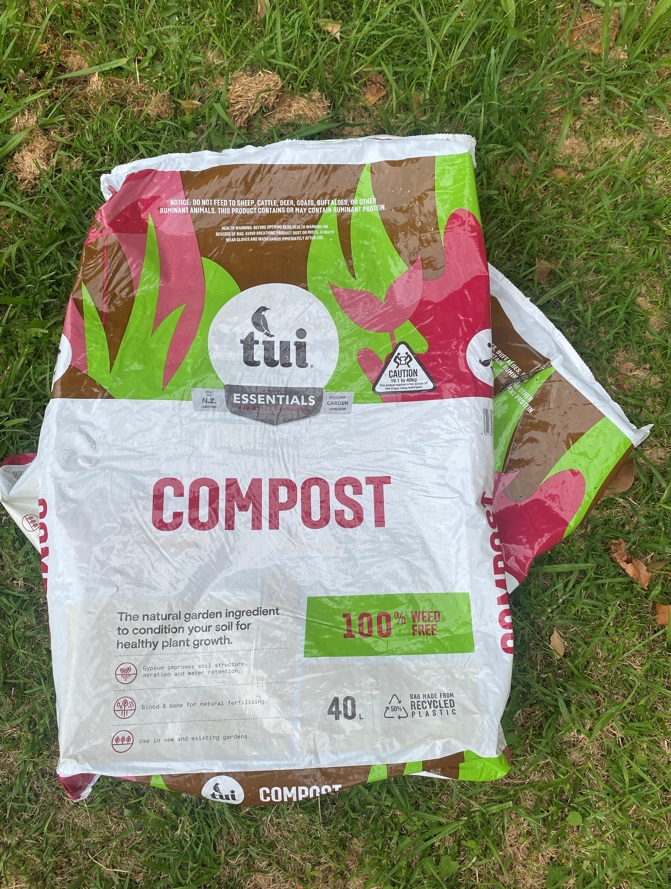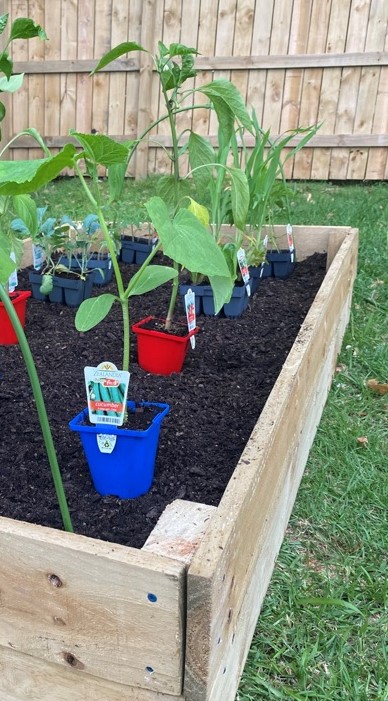Beginners guide to starting a Veggie Bed
Starting a veggie garden bed is exciting but there are a few things that you need to know before getting started. This list will help you avoid making the same mistakes I did when I started my first garden bed. Therefore, saving you extra money and those extra hours to fix the mistakes.
- Don’t use treated wood.
Some people don’t mind using treated wood to build their garden bed but if you are like me, you don’t like the idea of the chemicals from the treated wood leaking into the soil and in turn, into your vegetable plants.
Therefore, if you opt to use treated wood to make your garden bed, you can buy plastic polyethylene to cover the garden bed sides which will stop any chemicals from leaking into your soil and plants. (Do not cover the bottom of your garden bed with polyethylene, as the bottom should be open so the plants roots can grow into the natural soil.).
Also, if you use treated wood, make sure it’s from this year as older treated wood has more toxins in it.
Tip: Use a staple gun to staple the polyethylene to the garden bed wood before you place the soil into the bed. Covering all the way around the wood with polyethylene will help stop the wood from rotting as the plastic will protect the wood from the wet.

2. Don’t put too much compost in with the vegetable mix/soil
I made the mistake of filling half the garden bed up with compost and the other half with soil/vegetable mix.
In the end I added too much compost and it caused a huge spider mite problem. This is due to the fact that little spider mites love compost and thrive in it. In the end I had to spend more money buying neem oil, a natural pesticide, to deter any small bugs from my plants.
Tip: Compost should only be 25% of the garden bed. So, 1 compost bag for very 3 soil/veggie mix bags.

3. Nets
If you live in an area that has a high number of birds around, we would definitely recommend getting a net or cover of some sort to protect your garden bed. Birds love eating broccoli, capsicum, strawberries, kiwifruit and many more fruits and veggies and will happily do so when they have the chance. Therefore, nets or a little green house cover provides safety from the birds so you get a chance to eat the vegetables when they are full grown.
Tip: A cheap net alternative is a second-hand net curtain.
If you think you will have problems with butterflies and other smaller bugs eating your garden, you can purchase a bug net instead.
When installing the net, make sure it is high enough so your plants have the height to grow as tall as possible. For example, if you are covering lettuce, you will be able to get low garden tunnel pipes to hold up the net, however if you have tomatoes, cucumbers or capsicum growing upwards on a plant tower, you will need taller sticks to hold the net up higher than the tower the plant is growing up on.
4. Don’t plant your vegetables to close together
I know they seem small when you first get them, but I promise you they grow high and wide. Don’t make the mistake I did and put 6 tomato plants and a cucumber plant very close together. If you get a range of different plants, research how tall and wide they can get to ensure you plant them at a safe distance away from each other.

5. Grow up, not out – make veggie towers
The best way to grow plants that fall in the vine category is to guide them to grow on veggie towers. Veggie towers are great for smaller gardens and support plants such as cucumbers, tomatoes and beans. As the vine plant grows it will latch on to the tower and grow up on it, leaving space for your smaller plants and making your garden look tidy. Veggie towers also help plants stay separate from each other as the plant doesn’t spread out and touch other plants. If you are looking for a cheap veggie tower, the warehouse has a great one for only $22, as well as, a tomato tower for $40.
Now that you have these five tips, you can go and start your garden bed confidently knowing you won’t make these mistakes.
We provide gardening services such as tree trimming, tree removal, bark delivery and spreading and more!
Click here to see our range of services



